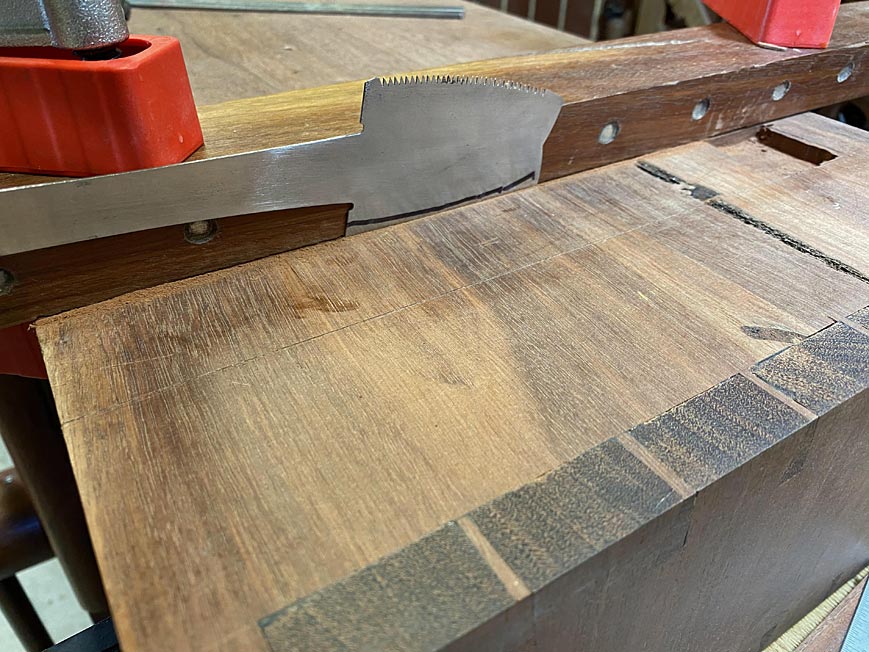Further to the angled groove there is the matter of the unusually shaped dovetails on the side pieces.
Here's Matt Eastlea's explanation. He starts the marking up at about 6:00 mins. He's already cut the angle on the end and his explanation, while obviously right, I found to be complex.
https://www.youtube.com/watch?v=NhBgHB_i9Ds
Then the penny dropped: it's complex because he's already cut the angle on the end!
If you start with a normally prepared board with the ends square to the sides, the task is really simple and easy. Here's the kit you need:
All I had to do was knock up two dovetail guides from scrap, one at 1:8 and the other at 1:6. Mr Eastlea points out that you need these to counter the optical illusion produced arising from normal dovetails being up against the angled end. You mark 1:6 on the lower side of each dovetail and 1:8 on the upper.
Assuming the end is square to the sides, mark the angle in pencil twice, the gap between being the length of the dovetails. Then working from one side to the other, mark the heights at which the ends of the dovetails cut the end angle. I chose 1/8", 3/4", 1/8", 3/4",1/8". The key thing is that you are measuring the distances not on the angled line but as spacings from top to bottom but they are obviously spread i.e. displaced laterally until they intersect the angled line. Then you just take your new jigs and mark in two lower lines at 1:6 and two upper at 1:8. Thus the fumbling about with a sliding bevel is eliminated.
Then you can cut the end slope. I also cut a 1/16" rebate (see middle bit of wood in pic.) because it really will help with marking the pins and the grooves for the sides (taken from the groove in the sloping end piece) but that is a matter of choice. The pic above is a bit more illuminating than my explanation. (If you click on it, it becomes a bit bigger and the detail is better.)



































